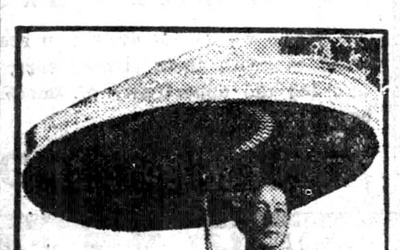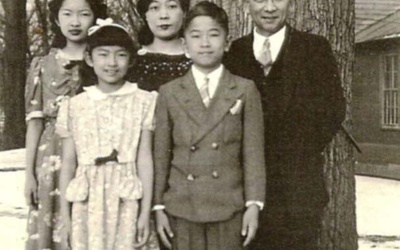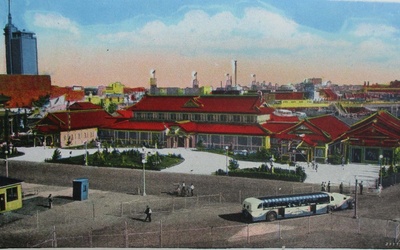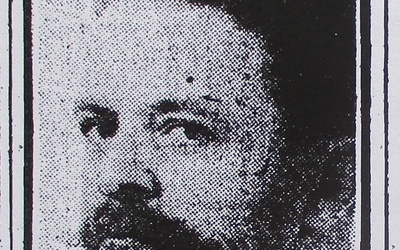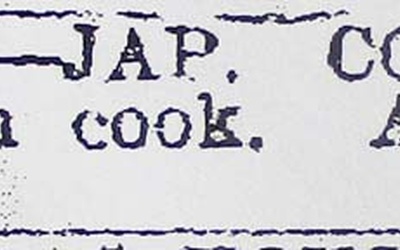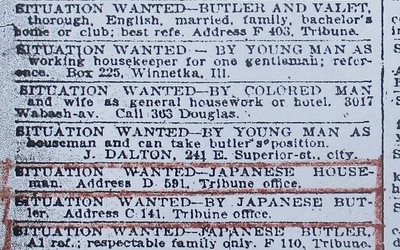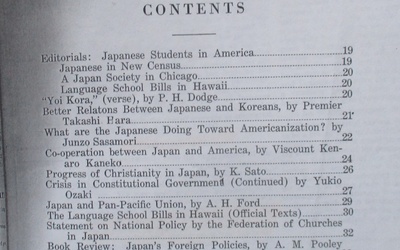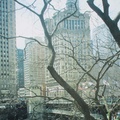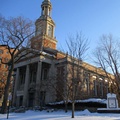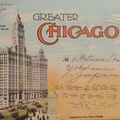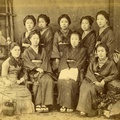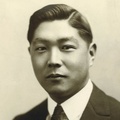
Takako Day
@takako70Takako Day, originally from Kobe, Japan, is an award-winning freelance writer and independent researcher who has published seven books and hundreds of articles in the Japanese and English languages. Her latest book, SHOW ME THE WAY TO GO HOME: The Moral Dilemma of Kibei No No Boys in World War Two Incarceration Camps is her first book in English.
Relocating from Japan to Berkeley in 1986 and working as a reporter at the Nichibei Times in San Francisco first opened Day’s eyes to social and cultural issues in multicultural America. Since then, she has written from the perspective of a cultural minority for more than 30 years on such subjects as Japanese and Asian American issues in San Francisco, Native American issues in South Dakota (where she lived for seven years) and most recently (since 1999), the history of little known Japanese Americans in pre-war Chicago. Her piece on Michitaro Ongawa is born of her love of Chicago.
Updated December 2016
Stories from This Author
Chapter 2 (Part 1): Japanese Acrobats and Entertainers in Chicago—Introduction
Sept. 25, 2022 • Takako Day
According to The Encyclopedia of Chicago, “Chicago’s position as the prime city of the Midwest has made it both a necessary stopover on the itinerary of any touring production and a home for a thriving resident theater community.”1 This explains exactly what Chicago represented for Japanese entertainers and why they lived there. In fact, the first Japanese who set foot in Chicago were members of acrobatic troupes who came here even before the transcontinental railroad was completed in 1869. In …
Chicago Missionaries and the Japanese - Michitaro Ongawa
Sept. 14, 2022 • Takako Day
Harry Kitano writes in his book Generations and Identity: The Japanese American that "the early Christian missionaries in Japan were unsuccessful in their mission work, and the Japanese immigrants who came to America were a good target for them to evangelize." However, Kitano's analysis does not really apply to the Japanese in Chicago. It seems as if he is saying that it was the success of mission work in Japan that led Japanese people to Chicago. One such person is …
Chapter 1 (Part 7): Japanese Garden Designers, Domestic Workers, and their “Japanophile” Employers—Japanese Gardener, Susumu Kobayashi, and Cook Junji George Matsumoto at Riverbank
July 17, 2022 • Takako Day
Read Chapter 1 (Part 6) >> After Taro Otsuka left Riverbank, another Japanese gardener named Oscar Susumu Kobayashi took over maintaining the garden Otsuka had built for George Fabyan around 1910. Kobayashi had met Otsuka at the Japanese YMCA in Chicago around 1917,1 when he was there looking for a job. In the years that followed, Otsuka and Kobayashi were close enough that Kobayashi let Otsuka stay at his place in Florida for several weeks in the winter of 1923-24, …
Chapter 1 (Part 6): Japanese Garden Designers, Domestic Workers, and their “Japanophile” Employers—Taro Otsuka from Chicago to New York City
July 10, 2022 • Takako Day
Read Chapter 1 (Part 5) >> In 1921, Otsuka moved to 216 North Michigan Avenue1 following Maruyama’s next business move,2 although the new location was “a less desirable location (than 300 S Michigan Avenue.)”3 In addition, Maruyama changed his business name to the Toyo Importing Company because, according to Beth Cody, “the Toyo Art Shop no longer carried just high-end art, but also included common decorative and household items.”4 When Maruyama’s business began declining, Otsuka had to think of another means for survival …
Chapter 1 (Part 5): Japanese Garden Designers, Domestic Workers, and their “Japanophile” Employers—Taro Otsuka, Japanese Garden Designer
July 3, 2022 • Takako Day
Read Chapter 1 (Part 4) >> Taro Otsuka was born in 1868 in Kochi, Japan and rumored to be an activist and a comrade of Taisuke Itagaki, a liberal politician who advocated for liberty and civil rights in the 1880s in Japan.1 At age 30, he arrived in Seattle on December 21, 18972, leaving his wife in Japan. He listed his profession as “mineral works” and his contact in the U.S. as “T. Kataoka” in Tacoma, Washington.3 This “T. Kataoka” was …
Chapter 1 (Part 4): Japanese Garden Designers, Domestic Workers, and their “Japanophile” Employers—“Honorary Japanese Consul” George Fabyan in Geneva, IL
June 26, 2022 • Takako Day
Read Chapter 1 (Part 3) >> In the early 20th century, there was another “prominent capitalist”1 in Geneva, a town along the Fox River, forty miles west of Chicago, who enjoyed employing Japanese domestic workers at his villa. His name was George Fabyan, and, according to some accounts, was considered to be an “Honorary Japanese Consul”2 before the Japanese Consulate was established in Chicago in 1897. Fabyan was well-known for entertaining Japanese celebrities and was rumored to be a friend of …
Chapter 1 (Part 3): Japanese Garden Designers, Domestic Workers, and their “Japanophile” Employers—Torajiro and Kiku Hamano and Julius Rosenwald in Chicago
June 19, 2022 • Takako Day
Read Chapter 1 (Part 2) >> Possibly the luckiest and most successful Japanese domestic worker in Chicago was Torajiro Hamano, who worked for twenty years for Julius Rosenwald, one of the founders of Sears, Roebuck and Company. According to the 1910 census, two single Japanese men lived in Rosenwald’s mansion at 4901 Ellis Ave. One was (Torajiro) “Kiku” Hamano, a 28-year-old butler, and the other was a 27-year-old Japanese houseman, Sakurain Louis, who were on staff along with two Norwegian …
Chapter 1 (Part 2): Japanese Garden Designers, Domestic Workers, and their “Japanophile” Employers—Popularity and Criticism of Japanese Servants
June 12, 2022 • Takako Day
Read Chapter 1 (Part 1) >> Looking at the overall picture of the service industry in those days, we find that Japanese immigrants with the right qualifications reported to be equal to the “splendid record of the older generation of black servants in the South” and thus, were placed in competition with the younger generation of African Americans in the industrious North. At the same time, Japanese people were not treated equally with whites in the polarized “black or white” …
Chapter 1 (Part 1): Japanese Garden Designers, Domestic Workers, and their “Japanophile” Employers—Introduction
June 5, 2022 • Takako Day
The first Japanese domestic servant to be recorded in the 1880 Illinois census was J. Yanada, a twenty-one year old single man who served Ulysses Grant, 18th President of the United States, in Galena, Illinois.1 Grant was very satisfied with Yanada, who was assigned to Grant’s service by the Japanese government when Grant toured in Japan in 1879,2 and once reported to a friend: “I have become so accustomed to travel with my little Jap, who looks after everything, that …
Katsuji Kato: from Spiritual Savior to Medical Professional - Part 4
March 13, 2022 • Takako Day
Read Part 3 >> We already know that on his trip to Japan in 1917, Kato met with Vice Minister of Education Tadokoro, who told Kato that he hoped the Japanese language was being taught to the Nisei (American-born, second generation Japanese) by their immigrant parents and felt that Japanese language education should be controlled by the Ministry of Foreign Affairs.1 Did Kato actually make contact with the Ministry of Foreign Affairs, and was he asked to publish a new magazine …


